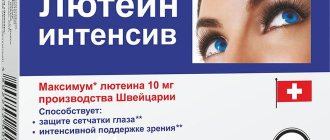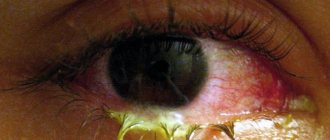Composition and action
The active ingredient of the drug is ciprofloxacin hydrochloride. It is part of many antibacterial drugs that have proven themselves in medicine for treating people. But Tsiprovet contains a unique formula that allows the use of antibiotics in veterinary medicine without harm to the health of the pet.
The key features of the veterinary drug are:
- wide spectrum of action. Ciprofloxacin is effective against both gram-positive and gram-negative bacteria, including staphylococci, streptococci, Escherichia, salmonella, shigella, klebsiella and others;
- an innovative formula that includes prebiotics along with antibiotics helps maintain the balance of intestinal microflora;
- prolonged action - the medicine lasts 24 hours, which greatly facilitates use;
- rapid restoration of intestinal microflora.
The action of ciprofloxacin is to disrupt the protein synthesis of pathogenic microorganisms, which leads to their rapid death. The substance is quickly absorbed in the intestines and distributed throughout tissues and organs, also penetrating the lymph and placenta. The active substance reaches its maximum concentration in the blood serum within 1.5-2 hours, the therapeutic effect lasts for 24 hours.
Despite the presence of contraindications, the drug is safe, which, together with its high effectiveness, explains the popularity of Tsiprovet in veterinary medicine.
What is the drug Ciprovet?
The Russian-made veterinary drug Tsiprovet is widely used for the effective treatment of various bacterial infections (primarily eye diseases) in domestic animals, including cats.
Ciprovet for cats is available in tablets and drops
Compound
The active ingredient of the drug Ciprovet is the compound ciprofloxacin hydrochloride - a universal antibiotic with a fairly wide range of uses.
One tablet of the drug contains 15 milligrams of this substance in combination with auxiliary components:
- polyvinylpyrrolidone;
- calcium stearate;
- lactolose.
Release form
The antibacterial drug Tsiprovet is available in tablet form, as well as in the form of eye drops. One blister contains ten tablets in a yellowish coating. The volume of the bottle with eye drops is ten milliliters. Medicines are provided with detailed instructions and packaged in cardboard boxes.
Mechanism of action
The active compound ciprofloxacin belongs to the group of fluoroquinolones and has a pronounced antibacterial effect. Once in the body of a sick cat, the medicine quickly paralyzes the vital activity of the pathogenic microorganisms parasitizing in it.
Active ingredients in Tsiprovet allow you to treat a wide range of diseases
When Tsiprovet is taken orally (in tablet form), the drug is absorbed through the mucous membranes of the gastrointestinal tract and the active substances are distributed throughout the body:
- through lymph;
- through the placenta;
- into the eye fluid.
Bacterial cells stop synthesizing protein and die. The prolonged therapeutic effect lasts throughout the day.
Ciprovet eye drops are used targeted in ophthalmology. When instilled, the drug enters the eye tissue and “works” effectively there, providing an antibacterial and antileptic effect.
The undoubted advantage of Tsiprovet is that its active substance is eliminated from the body - completely and in a short time.
Indications for use
The tablet form of Tsiprovet has a wide range of medicinal uses. The drug is recommended for the treatment of primary and secondary infections:
- skin;
- digestive tract;
- respiratory system;
- biliary tract;
- genitourinary organs;
- musculoskeletal system.
Tsiprovet in the form of eye drops is used for cats for therapeutic and preventive purposes:
- as part of complex therapy of various ophthalmological diseases;
- for the fastest recovery of the eye after injuries;
- in order to prevent complications in the pre- and postoperative periods.
Purpose
The antibiotic Ciprovet is used in the treatment of acute and chronic infections of bacterial etiology:
- organs of the gastrointestinal tract;
- urinary system;
- upper respiratory tract;
- joints and soft tissues, etc.
The antibacterial drug is also effective for secondary infectious infections against the background of viral diseases.
Dogs of different breeds and ages can be exposed to bacterial infections, but the most vulnerable to pathogenic microorganisms are puppies whose immunity is not yet strong enough, exhausted animals, and dogs with chronic pathologies. Infection can occur both by contact and airborne droplets, as well as by nutrition. Sometimes, even in the absence of direct contact with a sick animal, a pet can become infected - through household items, when feeding food containing microorganisms. Many infections are passed from the mother to the puppies through the placenta or when the puppy passes through the birth canal.
The risk group includes animals with low immunity, weakened animals, and those living crowded in enclosures - in nurseries, shelters, etc. Predisposing factors for the development of bacterial infections are unfavorable living conditions, low-quality food, and an unbalanced diet.
Important!
In animals with strong immune systems, bacterial infections may be asymptomatic. At the same time, dogs can infect other animals whose body has a weak protective barrier.
Only a veterinarian can determine the pathogen in order to correctly prescribe the most effective treatment. However, the owner may suspect health problems in the pet based on the following signs:
- a sharp increase in body temperature;
- poor appetite or complete refusal to feed;
- lethargy, fever, apathy;
- deterioration of the condition of the coat and skin;
- decreased response to external stimuli;
- purulent discharge from the eyes, nose;
- runny nose, cough and others.
The intensity of the manifestation of symptoms of a bacterial infection can be different, they do not necessarily appear all together, the symptoms depend on the location of the pathogenic bacteria, the general physiological state of the dog, the resistance of its body, even age - small puppies and older dogs are more susceptible to bacterial diseases. Infections can affect puppies in utero if a pregnant female becomes ill.
When the organs of the digestive system are damaged, the dog quickly loses weight, vomiting, diarrhea or, conversely, constipation, and abdominal pain are observed. Mucus and blood appear in the stool and vomit.
If the infection affects the skin, ulcers and scars appear on the body, and hair falls out. Other signs of dermatological bacterial infections:
- skin rashes;
- scabs;
- eczema;
- alopecia.
Without treatment, pathogens penetrate from the epidermis into the deeper layers of the skin and further, affecting internal organs. Ciprovet tablets help stop the development of infection in the early stages. In case of damage to the organs of vision, sometimes Tsiprovet drops are the only effective remedy, since they act quickly, destroy the DNA of bacteria, thereby achieving a lasting therapeutic effect.
Eye drops are used:
- for inflammatory and infectious diseases of the organ of vision;
- corneal ulcer;
- blepharitis;
- conjunctivitis, etc.
Dosage
Despite the fact that the manufacturer includes instructions for use with each package of the medicine, the medicine should be given to your pet based only on the treatment regimen drawn up by the veterinarian.
Typically, when using tablets to treat bacterial infections, the dose can be calculated based on the weight of the animal: 1 tablet per 3 kg of body weight. The medicine is given once a day, strictly at the same time for 3-5 days.
For eye diseases, treatment should be continued for 1-2 weeks, dripping 1-2 drops into each eye every 6 hours (4 times a day).
Tsiprovet drops
Ciprovet ophthalmic drops are available in glass and polymer dropper bottles of 1, 5 and 10 ml. 1 ml of solution contains 4.5 mg of ciprofloxacin hydrochloride and excipients: sodium chloride and hydroxide, antiseptics benzalkonium chloride and lactic acid. The price of a 10 ml bottle is 178 rubles. The shelf life of the drug is 3 years.
Indications, contraindications
Ciprovet drops are used in the treatment of ophthalmological diseases in dogs, as well as as a means of preventing secondary infections - in the preoperative and postoperative periods or after injuries to the eyeball. Eye drops are used in therapy:
- conjunctivitis;
- blepharitis;
- keratitis;
- septic uveitis;
- corneal ulcers.
Contraindications to the use of the drug are the age of puppies less than a week old and individual hypersensitivity to fluoroquinolones. Treatment with Tsiprovet of animals with atherosclerosis and severe cerebrovascular accident is carried out under the supervision of a doctor.
Tsiprovet rarely produces side effects; usually it is a short-term manifestation of an allergic reaction in the form of itching or lacrimation. If severe conjunctival hyperemia (redness of the mucous membrane of the eyes) develops, stop using the drug.
Rules of application
Ciprovet drops are injected into the conjunctival cavity of the affected eye of the animal using a pipette or dropper bottle 4 times a day. A single dose for dogs is 1-2 drops, the duration of treatment is until complete recovery (usually 7-14 days).
In case of excessive discharge of exudate or pus from the eyes, first remove the exudate and crusts of dried pus with a sterile swab moistened with Tsiprovet solution, then, slightly retracting the lower eyelid, administer a therapeutic dose of the drug.
Side effects and contraindications
If the dog does not have hypersensitivity to the components of the drug, negative consequences after taking Tsiprovet rarely occur. If you are allergic to fluoroquinolones, you may:
- refusal of food;
- swelling of the muzzle;
- vomit;
- impaired coordination of movements;
- tremor.
Tsiprovet is not prescribed to puppies during the growth period, pregnant and lactating females, animals suffering from nervous pathologies and impaired development of cartilage tissue. The medicine should not be given simultaneously with other antibiotics, NSAIDs, drugs containing magnesium, calcium and aluminum. Cations of these trace elements bind to ciprofloxacin, preventing its absorption, which weakens the therapeutic effect of the drug.
Ciprovet tablets
In tablet form, Ciprovet for dogs is used for diseases whose pathogens are sensitive to fluoroquinolones. The composition of the drug, in addition to the active component ciprofloxacin hydrochloride, includes:
- lactulose is a prebiotic that activates the growth of natural intestinal microflora;
- calcium stearate - filler, stabilizer;
- povidone (polyvinylpyrrolidone) – binder.
Tablets of 10 pieces are packaged in blisters. The price of a blister pack of the drug is 147 rubles. Shelf life: 4 years.
Indications, contraindications
Ciprovet tablets are prescribed to dogs for infectious diseases:
- gastrointestinal tract;
- genitourinary system (including urethritis, cystitis);
- kidney (pyelitis, pyelonephritis);
- musculoskeletal system;
- respiratory organs (including pneumonia, obstructive pulmonary disease, bronchiectasis);
- middle ear, sinuses;
- gallbladder and bile ducts;
- skin and soft tissues.
The use of antibiotics is not allowed:
- during pregnancy and lactation;
- during the period of puppy growth;
- in conditions accompanied by convulsive syndrome;
- in the presence of pathologies in the development of cartilage tissue;
- with diagnosed individual hypersensitivity to fluoroquinolones.
This drug, as a rule, does not cause side effects. If sensitization (individual intolerance) to the active substance Ciprovet ciprofloxacin develops, the dog may experience swelling, ataxia (impaired motor coordination), and vomiting. In such cases, the drug is discontinued.
Admission rules
Tsiprovet tablets are taken once a day, the standard course of administration is 3-5 days. The dosage of the antibiotic is calculated individually, depending on the weight of the animal. For large breeds of dogs, the daily dose is 1 tablet per 10 kg, for small breeds - 1 tablet per 3 kg of body weight.











